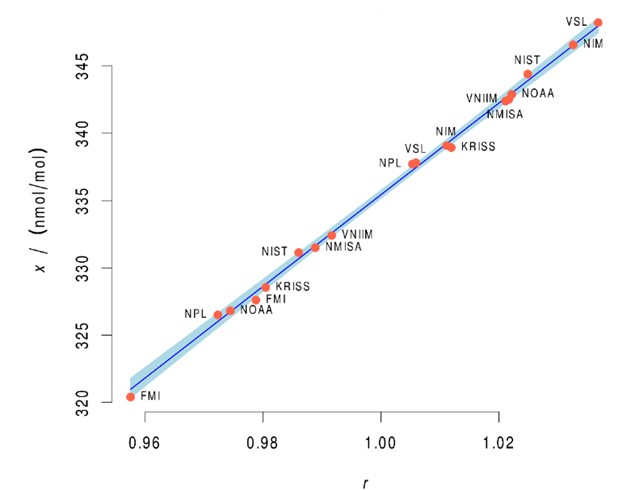Key comparison demonstrates accuracy of N2O in Air Greenhouse Gas Standards
The comparison of nitrous oxide in air standards from ten laboratories has demonstrated reference value uncertainties of
The results are published by the BIPM in the report of the key comparison
Nitrous oxide is the third most important individual contributor to radiative forcing by long lived greenhouse gases (LLGHGs) and accounting for about 7%. It is emitted into the atmosphere from both natural sources (approximately 57%) and anthropogenic sources (approximately 43%), including oceans, soils, biomass burning, fertilizer use and various industrial processes. WMO has reported that recent increases in nitrous oxide amount fractions exceed the average annual growth rates over the past decade.
The comparison has demonstrated that standards that are currently used in monitoring networks for nitrous oxide agree within their stated uncertainties and SI traceable values, as determined by the key comparison reference values. The highest levels of internal consistency of standards used within monitoring networks are maintained through traceability schemes relying on one central laboratory maintaining an individual set of standards for N2O in air. Networks report values on the same scale, to avoid uncertainties arising from the use of different standards, and with conversion and reporting of values on a common scale then possible. More information regarding the development, maintenance and comparison of GHG Scale Standards is available through the link below.

Key comparison reference function based on the amount fractions reported by the participants and the corresponding response ratios measured by the BIPM. The dark blue line with light blue shading represents the Bayesian EIV regression and associated uncertainty.